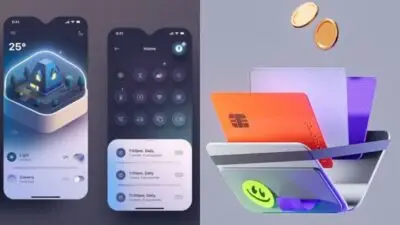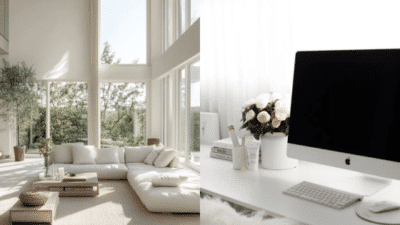Imagine transforming your ideas into tangible objects that enhance your daily life. From simple household items to complex gadgets, 3D printing allows you to create functional pieces that marry utility with creativity. This transformative technology not only stands as a testament to modern innovation but also offers a practical solution for everyday challenges.
With the right 3D printer and a bit of creativity, you can produce a wide array of useful objects. Phone mounts, tool organizers, or even bespoke kitchen gadgets can emerge from a spool of filament and a well-calibrated machine. Such projects not only save money but also allow customization to your specific needs, enhancing their value and functionality in your life.
Exploring innovative projects can lead to unexpected benefits, both creatively and practically. Designing unique solutions tailored to your lifestyle propels you into a realm of limitless possibilities. Embrace the potential of 3D printing, and watch as it reinvents how you perceive everyday utility.
Key Takeaways
- 3D printing offers practical solutions for daily needs.
- You can create customized and functional items at home.
- Designing with a 3D printer opens up innovative opportunities.


Getting Started with 3D Printing
Launching into 3D printing involves understanding the tools and materials you use, which significantly impact the quality and style of your creations. From selecting a suitable printer to mastering the design software, each element plays a crucial role.
Choosing the Right 3D Printer
Selecting the right 3D printer is essential for achieving your design goals. FDM printers, known for their affordability, are great for beginners. They use thermoplastic filaments like PLA and PETG, which are easy to work with and environmentally safe. Consider build volume; it determines the size of the items you can print. Also, evaluate layer resolution which affects the detail and smoothness of your prints. Some popular choices include the Creality Ender 3 and Prusa i3, known for their user-friendly interfaces and effective customer support. Analyze your budget, print speed requirements, and ease of maintenance to make the best decision.
Selecting 3D Printing Materials
Choosing your 3D printing materials involves balancing factors like strength, flexibility, and appearance. PLA is beginner-friendly due to its low cost and ease of use. Its biodegradability makes it ideal for educational projects and prototypes. If durability and heat resistance are important, PETG is a solid alternative, offering a good mix of flexibility and toughness. Keep in mind the printer’s specifications to ensure compatibility with different materials. Storing materials properly, in airtight containers, is key to preserving their quality. Some materials require specific handling; reading the manufacturer’s guidelines can prevent common pitfalls.
Understanding 3D Printing Design Software
3D printing design software is your canvas to bring digital models to life. Programs like Tinkercad offer intuitive platforms for beginners, featuring drag-and-drop simplicity. For more intricate designs, Fusion 360 provides comprehensive tools for precision and versatility. You’ll import or create models in the software, which translates them into print-ready files. Learning to use slicing software, such as Cura, is imperative, as it optimizes models for printing by defining layer heights and fill densities. Utilize online tutorials and community forums to expand your expertise and troubleshoot issues effectively.

Design and Preparation
Embarking on a 3D printing project requires careful planning and attention to detail. You’ll need to create a precise digital model, optimize it for printing, and ensure you have the necessary equipment to bring your designs to life.
Creating Your First STL File
Designing your first STL file involves creating a digital 3D model that represents your intended 3D printed object. You can use software like TinkerCAD, Blender, or Fusion 360 to construct these models. These programs allow you to manipulate shapes, sizes, and dimensions to match your vision. Save your completed models as STL files since this format is widely used in 3D printing. Exporting your design as an STL file ensures compatibility with most 3D printers, allowing the machine to interpret your model accurately.

https://makerworld.com/en/models/1138300-monitor-riser-monitor-lift?from=search#profileId-1140155
Optimizing Your Designs for 3D Printing
To optimize your designs, focus on refining the model to enhance print quality and reduce material usage. Consider factors such as layer height, infill density, and support structures during this phase. For example, reducing the layer height can result in smoother surfaces but may increase print time. Minimizing infill and strategically placing supports can also prevent material waste. Software like Cura or PrusaSlicer can help adjust these settings efficiently. Test your designs using simulations to detect potential issues before printing. This minimizes errors and helps achieve the desired level of detail in the final print.
Equipment Essentials for 3D Printing
Having the right equipment is crucial for successful 3D printing. Start with a reliable 3D printer suited to your project’s requirements—FDM and SLA are popular options depending on the desired level of detail and material compatibility. Essential tools include calipers for measuring parts and a scraper for removing prints from the build platform. Filaments or resins, depending on your printer type, are fundamental materials you’ll need. Additionally, having a dedicated workstation with appropriate ventilation is vital for safety, especially when working with certain materials that can emit fumes during printing.
Practical 3D Prints for Daily Use
3D printing opens up numerous opportunities to enhance everyday tasks with personalized and efficient solutions. You’ll discover methods to create functional objects that seamlessly integrate into various aspects of your life.
Home Fixtures and Furniture
3D printing offers innovative ways to customize and improve home fixtures and furniture. You can create unique handles and knobs to refresh the appearance of drawers and cabinets. Imagine designing a set of coasters that match your room’s decor perfectly.
Additionally, consider crafting a bespoke lamp or a stylish vase that complements your living space. The ability to produce small furniture components allows you to update or repair broken items effortlessly, ensuring your home maintains a cohesive and appealing look.

https://makerworld.com/en/models/679579-designer-tray-oneworld?from=search#profileId-607835
Custom Replacement Parts
Customization in 3D printing shines with the creation of replacement parts. Let’s say a lamp part breaks; instead of discarding the whole unit, you can print the exact component needed to restore its function.
You can save both money and time by printing rare or discontinued parts that are otherwise difficult to source. Custom parts for appliances, fixtures, or gadgets help keep your favorite items in use longer, reducing waste and extending product life.
DIY Tools and Accessories
Whether you’re a DIY enthusiast or just looking to solve everyday issues, 3D printing offers a vast array of tools and accessories. Try printing a set of small hand tools like wrenches or screw holders that are personalized to your needs.
You can also design and produce handy desk organizers or cable management systems to keep your workspace tidy. If you enjoy outdoor activities, why not create custom gear hooks or clips to organize your equipment efficiently? These printed items ensure that your DIY projects or hobbies have the right tools for the job.

Innovative 3D Printing Projects
Exploration in 3D printing has led to the creation of unique projects like electronic gadgets, educational models, and advanced engineering applications. These innovations provide practical solutions while showcasing creative problem-solving.
Electronic Gadgets and Prototypes
3D printing plays a pivotal role in the development of electronics and prototypes. You can create custom parts, such as phone holders or enclosures for circuits, by using accessible online platforms like Thingiverse.
Rapid prototyping helps in testing designs without the need for expensive tooling. Whether you’re crafting functional prototypes for CNC machines or small electronic components, 3D printing offers cost-effective and tailored solutions for innovators in this field.
Interactive Art and Educational Models
Through 3D printing, art and education merge seamlessly. You might develop interactive educational models, such as anatomical structures or molecular representations, that aid in visual learning. For artists, the medium allows the creation of intricate sculptures and dynamic installations.
By utilizing a 3D printed model, you give students and viewers hands-on experiences that textbook illustrations can’t match. This innovative approach transforms abstract concepts into tangible, engaging materials.

https://makerworld.com/en/models/1119764-solar-system?from=search#profileId-1117906
Advanced Applications for Engineers
For engineers, 3D printing is invaluable in creating complex structures and components. The technology supports the fabrication of electricity generators and other sophisticated hardware, often with geometries not possible through traditional methods.
Beyond prototypes, many industries now use 3D printed parts in final products. Engineers harness this technology to explore pioneering solutions in everything from aerospace to mechanical engineering, broadening the horizons of design and production capabilities.
Maintaining Your 3D Printer
Proper maintenance is key to ensuring a long life and high-quality output from your 3D printer. Regularly addressing common issues, conducting upkeep, and managing materials properly are crucial steps to achieving reliable and efficient printing.
Troubleshooting Common Issues
When your 3D printer experiences issues, identifying and resolving them quickly can dramatically improve performance. Common problems include clogged nozzles, uneven printing, and layer adhesion failures. Clogged nozzles can often be cleaned using a fine needle or cleaning filament, which you can find on platforms like Amazon.
Uneven printing is often caused by bed leveling issues. Regularly check and adjust the bed level to prevent this. For layer adhesion failures, ensuring the correct temperature settings for your filament type is essential. Reviewing forums like Thingiverse may provide additional user-driven solutions to specific problems.

https://makerworld.com/en/models/252931-apple-watch-charging-stand?from=search#profileId-269297
Regular Maintenance Tips
Routine maintenance can extend the lifespan of your printer. Lubricate moving parts monthly to reduce friction and wear. Also, tighten belts and screws periodically to avoid printing errors caused by loose components. You can create a maintenance schedule to keep track of these tasks.
Cleaning is another vital part. Use a soft brush or a vacuum with a brush attachment to keep the printer and its components free from dust and debris. Ensuring that all parts are dust-free helps maintain optimal print quality.
Material Storage and Handling
Proper storage of filaments is crucial to prevent them from absorbing moisture, which can lead to print defects. Use desiccant containers to store your filaments in a dry environment. You might also consider vacuum sealing them when not in use for extended periods.
Understanding how to handle specific types of filaments can also improve print results. For example, PLA and ABS require different storage conditions. Regularly check the manufacturer’s guidelines for each filament type. Reliable platforms like Amazon offer a wide range of storage solutions tailored to maintaining filament quality.
- 214shares
- Facebook0
- Pinterest214
- Twitter0



